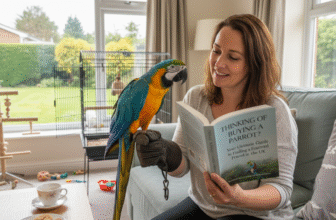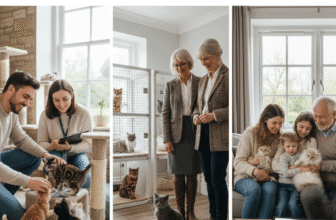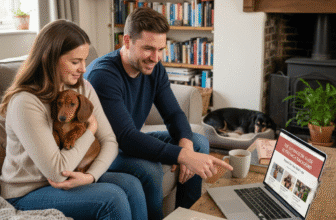
Rabbits for Sale in the UK: Your Complete Guide to Finding a Hoppy, Healthy Companion
The thought of bringing a rabbit home is utterly delightful. Those twitching noses, long floppy ears, and soft, fluffy bodies can melt even the sternest of hearts. It’s no wonder that a search for “rabbit for sale” is a common first step for many prospective pet owners across the UK. However, welcoming a rabbit into your life is a significant commitment, one that goes far beyond their undeniable cuteness. It’s a journey that, when properly prepared for, can bring immense joy for a decade or more.
This comprehensive guide is designed to walk you through everything you need to consider before you bring home a new bunny. We’ll move past the simple transaction of a sale and delve into the realities of responsible rabbit ownership, exploring the best places to find your new friend, the true costs involved, and how to create the perfect environment for them to thrive. Let’s ensure your new companion has a long, happy, and ‘hoppy’ life with you.
Are You Truly Ready for a Rabbit? The Big Questions to Ask Yourself
Before you even type “rabbit for sale” into your search bar, it’s crucial to have an honest conversation with yourself and your family. Rabbits are often misunderstood as simple, low-maintenance starter pets for children. This couldn’t be further from the truth. They are complex, intelligent, and sensitive animals with very specific needs.

- Time and Commitment: Rabbits can live for 8 to 12 years, and sometimes even longer. This is a long-term commitment comparable to owning a cat or a dog. Are you prepared for that level of responsibility? They require daily cleaning, feeding, social interaction, and time outside of their enclosure for exercise.
- Social Needs: Rabbits are incredibly social creatures. In the wild, they live in large groups. A solitary rabbit is often an unhappy and stressed rabbit. The current welfare best practice, championed by organisations like the Rabbit Welfare Association & Fund (RWAF), strongly recommends keeping rabbits in neutered pairs or compatible groups. This means you should be planning for two rabbits, not one.
- Space Requirements: The traditional image of a rabbit in a small hutch at the bottom of the garden is outdated and cruel. Rabbits need a significant amount of space to run, jump, dig, and exhibit their natural behaviours. We’ll explore housing in more detail later, but be prepared to dedicate a substantial area of your home or garden to them.
- Financial Responsibility: The initial purchase price of a rabbit is a tiny fraction of its lifetime cost. You must budget for high-quality food, hay, bedding, regular vet check-ups, annual vaccinations, pet insurance, and potential emergency medical care, which can be very expensive.
- Household Suitability: Do you have other pets? While rabbits can sometimes live with other animals, introductions must be done carefully and under supervision. Are your children old enough to understand how to interact with a delicate prey animal gently? Rabbits generally dislike being picked up and cuddled, which can be disappointing for young children.
Where to Find Your New Friend: Rescue Centres vs. Breeders
Once you’ve decided you’re ready, the next big question is where to get your rabbit from. This is arguably the most important decision you will make. Your two main options in the UK are reputable rescue centres and responsible breeders.
The Overwhelming Case for Adoption from a Rescue Centre
Across the UK, thousands of wonderful rabbits are waiting in rescue centres for a loving home. These rabbits often end up in shelters through no fault of their own – perhaps due to a family’s change in circumstances, an owner’s lack of understanding of their needs, or as part of an unwanted litter. Opting for adoption is a compassionate choice with numerous benefits:
- You’re Saving a Life: You are giving a deserving animal a second chance at happiness and freeing up a space at the rescue for another rabbit in need.
- Health and Behavioural Assessment: Rabbits from good rescue centres (like those run by the RSPCA, Blue Cross, or smaller, dedicated local rescues) will have been thoroughly vet-checked. They will almost always be neutered and fully vaccinated, saving you a significant initial cost and responsibility.
- Expert Matching: Rescue staff get to know their rabbits’ individual personalities. They can help match you with a single rabbit or, even better, a pre-bonded pair that suits your lifestyle and experience level. This takes the guesswork out of finding a compatible friend for a single bunny.
- Ongoing Support: Reputable rescues offer a lifetime of support and advice. If you run into any issues, they are there to help you.
- Ethical Peace of Mind: You are not contributing to the problem of overpopulation. You are being part of the solution.
Navigating the World of Breeders
If you have your heart set on a specific pedigree breed, you might consider a breeder. However, it is vital to be able to distinguish a responsible, ethical breeder from a “backyard breeder” or a rabbit farm, which often prioritise profit over welfare.
A reputable breeder will:
- Specialise in one or two breeds: They will be knowledgeable and passionate about their chosen breed.
- Welcome you to their home: They will insist you visit and see the conditions the rabbits are kept in. The environment should be clean, spacious, and stimulating.
- Show you the mother (and father, if possible): You should be able to see that the parent rabbits are healthy, well-cared-for, and have good temperaments.
- Ask you lots of questions: A good breeder cares deeply about where their rabbits are going. They will quiz you on your knowledge, home setup, and commitment. Be wary of anyone willing to sell you a rabbit with no questions asked.
- Provide a health guarantee and support: They will offer after-sale support and will take the rabbit back at any point in its life if you can no longer care for it.
- Not sell rabbits under 8-10 weeks old: Rabbits need to stay with their mother for this long to learn essential social skills and to ensure their digestive systems are mature enough.
Red Flags to Watch For: Avoid any seller who wants to meet you in a car park, refuses a home visit, has a huge number of different litters available, cannot provide a clear health history, or is selling “unusual” or “rare” colours for an inflated price. And please, never buy from a pet shop or online marketplace like Gumtree or Pets4Homes without extreme caution. These are often outlets for large-scale, low-welfare breeders, and the animals may have underlying health and behavioural issues.
The True Cost of Rabbit Ownership in the UK
Budgeting properly is essential. Rabbits are not cheap pets. Here’s a realistic breakdown of the potential costs:
Initial Setup Costs (for a pair)
- Adoption Fee/Purchase Price: £80 – £150 for a pair from a rescue (often includes neutering and vaccinations) / £40 – £120+ for a pair from a breeder.
- Housing: A large, high-quality hutch and run combo (e.g., 6ft hutch with an 8ft attached run) or a large indoor pen: £150 – £400.
- Neutering: If not done by the rescue: £80 – £120 per rabbit.
- Initial Vaccinations: £70 – £100 per rabbit for the combined Myxomatosis, RHD1, and RHD2 vaccine.
- Supplies: Heavy ceramic food bowls, water bottles/bowls, litter trays, pet carrier, grooming tools: £50 – £80.
- Initial Food & Bedding: A bag of high-quality pellets, a large bale of hay, and substrate/bedding: £40 – £60.
Total Initial Cost: Approximately £470 – £910+
Ongoing Monthly/Annual Costs
- Hay: The most important part of their diet. A pair of rabbits will get through a lot of high-quality Timothy or meadow hay: £20 – £40 per month.
- Pellets: A high-fibre, good-quality brand. An egg-cup full per rabbit per day is plenty: £10 – £15 per month.
- Fresh Greens: A variety of rabbit-safe greens and herbs: £15 – £25 per month.
- Bedding/Litter: £10 – £20 per month.
- Annual Vaccinations/Health Check: £70 – £100 per rabbit, per year.
- Pet Insurance: Highly recommended to cover unexpected illness or injury: £15 – £25 per month for a pair.
- Flystrike Prevention: Seasonal preventative treatments in summer: £10 – £15.
Total Ongoing Annual Cost: Approximately £900 – £1600+
Creating the Perfect Rabbit Home: A Hutch is Not Enough
The single most important aspect of a rabbit’s welfare is its environment. The RWAF’s ‘A Hutch Is Not Enough’ campaign highlights that rabbits need space to be able to perform a full ‘binky’ (a leap in the air with a twist), stretch out fully, and run. The minimum recommended space is a single continuous area of 3m x 2m, with a height of 1m.
Housing Options
- Shed and Run Combination: A converted garden shed attached permanently to a large, secure aviary-style run is a fantastic option. It provides shelter, warmth, and constant access to a large exercise area.
- Wendy House Conversion: Similar to a shed, a child’s wendy house can make an excellent, insulated base for your rabbits.
- Large Hutch and Run: If you opt for a hutch, it must be large (at least 6ft) and serve only as a sheltered ‘bedroom’ that is permanently attached to a secure run of at least 8ft x 6ft. The rabbits must have access to the run 24/7.
- Indoor Living: Keeping rabbits indoors is becoming increasingly popular. You can use a large dog crate or a modular pen system (like NIC grids) as a ‘home base’ but allow them supervised free-run time in a bunny-proofed room or area for several hours each day.
Bunny-Proofing Your Space
Rabbits are natural chewers. To keep them safe and your belongings intact, you must bunny-proof their area. This means:
- Covering all electrical cables with hard plastic casing.
- Lifting or removing toxic houseplants.
- Blocking access to areas where they could get stuck.
- Protecting wooden furniture legs with guards.
A Healthy Diet for a Happy Bunny
A rabbit’s diet is simple but specific, and getting it right is crucial for their dental and digestive health.
- Hay (85-90%): An unlimited supply of high-quality feeding hay should form the vast majority of their diet. It wears down their constantly growing teeth and keeps their gut moving.
- Fresh Greens (10%): A packed cup of safe, fresh greens per 2kg of body weight daily. Think herbs like parsley and basil, and leafy greens like romaine lettuce (not iceberg) and kale. Introduce new greens slowly.
- Pellets (5%): A small, measured amount of high-fibre pellets. Avoid muesli-style mixes, as they encourage selective feeding and can lead to serious health problems.
- Fresh Water: Constant access to fresh, clean water, preferably from both a sipper bottle and a heavy ceramic bowl.
Choosing Your Rabbit and Bringing Them Home
When you meet a potential rabbit, look for signs of good health: bright, clear eyes; a clean nose and ears; a smooth, well-groomed coat; and a curious, active demeanour. Check their bottom is clean, as a soiled rear can be a sign of digestive issues.
The journey home can be stressful, so use a secure carrier with some hay inside. When you get home, set up the carrier inside their new enclosure, open the door, and let them come out in their own time. For the first few days, sit quietly near them, speaking in a calm voice. Let them approach you. Building trust takes time and patience.
Bringing a rabbit into your life is a wonderful decision, but it’s one that demands research, preparation, and a deep sense of responsibility. By choosing to adopt, budgeting for their care, and providing them with the space and diet they need to flourish, you are not just buying a pet; you are welcoming a cherished family member. The reward for your efforts will be the quiet joy of watching your happy, binkying bunnies thrive in the safe and loving home you’ve created for them.






